This amazing Thai green curry recipe is one of our favourite weeknight dinner recipes, full of incredible flavour, tender chicken and spicy heat. Ready in 20 minutes with homemade green curry paste!
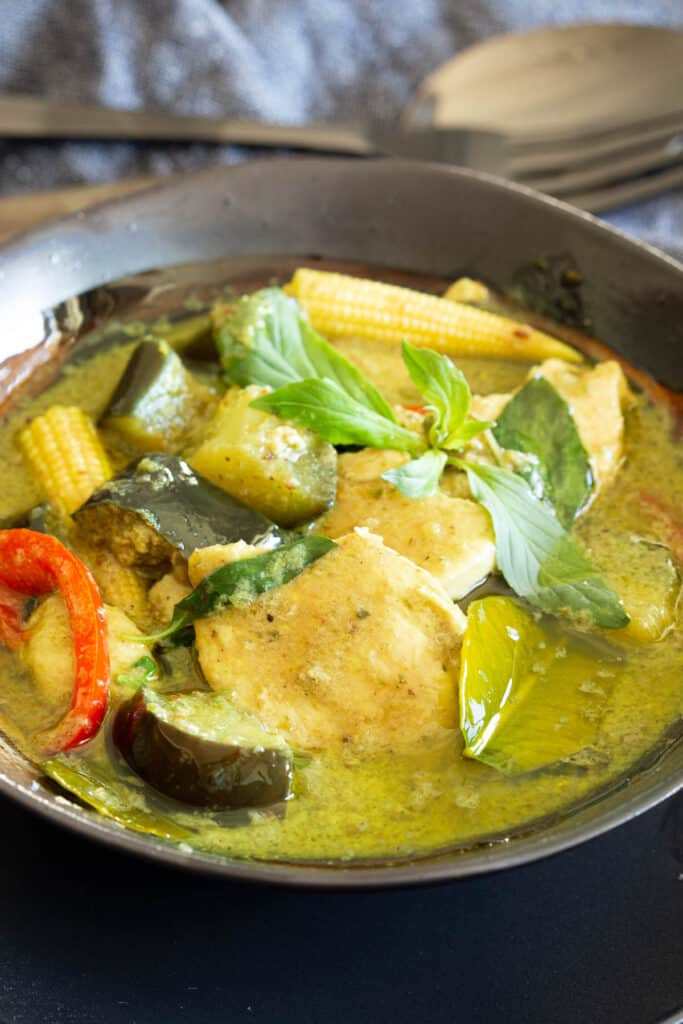
In This Post You’ll Learn
Why We Love This
Thai green chicken curry recipe is pure comfort food – so full of flavour and super quick to make. It’s one of the most-requested recipes from our readers and we’re so excited to share it with you!
It’s easy to adjust the spice level, you can either use more curry paste to make it hotter, or add more coconut milk to tone it down. Make it to your own personal preference. Our recipe today is a medium-hot spice level.
Double the recipe to serve more people or make extra for leftovers the next day.
The best thing about Thai curries is they’re super adaptable to use up whatever veggies you have in the fridge, so feel free to get creative and reduce food waste. Sarah’s Mum loves adding zucchini and green beans to hers, topped with a huge handful of coriander / cilantro – Aussie style!
Related: Thai Green Curry Paste / Panang Curry Paste / Panang Chicken Curry
Why is there oil on top of green curry?
This is actually the sign of a well cooked curry!
The oil occurs when the coconut milk is cooked in with the curry paste to a high enough temperature where it splits. The fats and oils in the coconut milk separate out to form the oil layer on top at the end of the cooking process, helping to release all the flavours in the curry paste.
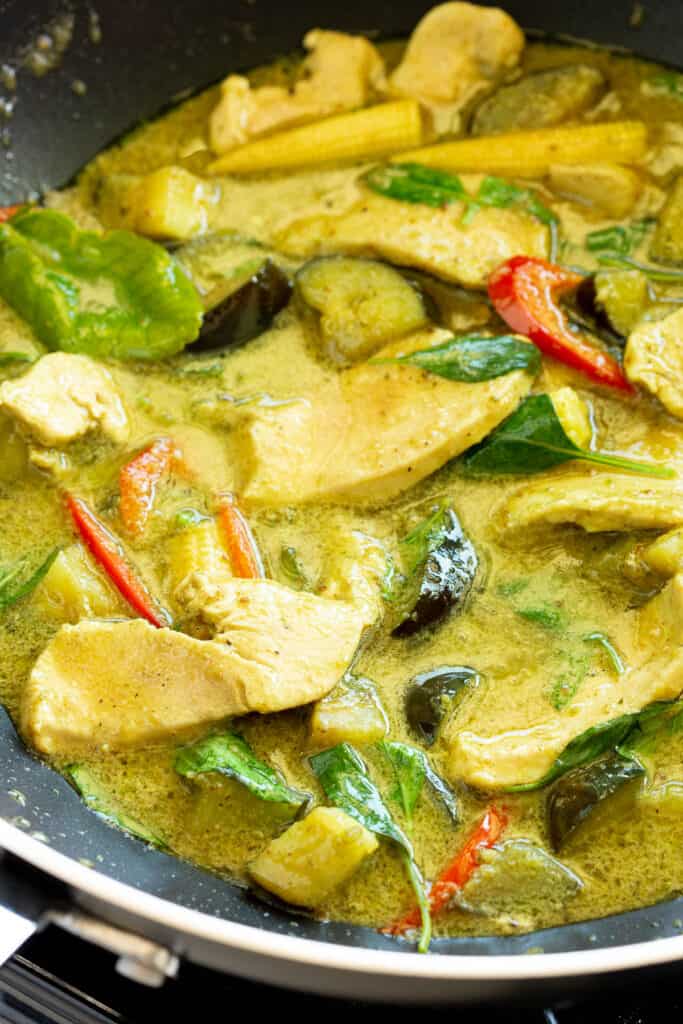
What is Thai Green Curry?
Thai green chicken curry (also known as Gaeng Keow Wan Gai / แกงเขียวหวานไก่) is a popular Thai curry recipe.
The iconic Thai green curry sauce gets its colour and pungent flavour from the use of green curry paste, which is cooked down in coconut milk until it splits to release the oils and flavours.
Traditionally, small Thai eggplants (aubergines) and pea eggplants are the main vegetables included, which soften and melt into the sauce.
In Thailand this curry is usually made with fish, but in Australia most Thai restaurants or takeaway places make it with chicken, just like our Adelaide-style choo chee chicken curry!
We were lucky enough to learn a couple of variations of this dish on our travels, so this is a blend of a Chiang Mai version and Koh Lanta version, with our own adaptions thrown in from both our Mum’s making this curry for us growing up.
Note the colour of green chicken curry isn’t always green – it can also look yellow depending on the curry paste used.
What You’ll Need
- Curry Paste – Use homemade green curry paste if you have the time (it always tastes so much better and you can freeze it in portions). Otherwise, store bought curry paste tastes perfectly fine to make it quicker and easier, we use and recommend both Mae Ploy or Maesri brands. Sub with red curry paste if that’s all you have on hand. Note that the colour and flavour will be different of course, as will the heat level.
- Chicken – We usually use chicken breasts or chicken thigh meat. Use any cut of boneless skinless chicken you like. Cut into thin slices or small cubes.
- Vegetables – Use Thai eggplants and/or pea eggplants if you can source them. Sub with one 1 small purple eggplant, and/or any other veggies you like, such as thinly sliced capsicum / red bell pepper, carrot, broccoli, bok choy, snow peas, regular peas etc. Also feel free to add additional flavours like onion, garlic and ginger to really amp things up.
- Makrut Lime Leaves / Kaffir Lime Leaves – Fresh leaves are best for this recipe. You can also find them dried, frozen or in a jar at Asian and local supermarkets. Sub with the zest of one lime. They may be labelled as kaffir lime, makrut or Thai lime leaves. The best name to use is makrut. If you can’t source them, just leave them out.
- Other Ingredients – You’ll also need Thai basil leaves or sweet basil, coconut milk (or coconut cream), fish sauce and palm sugar (sub with regular sugar).
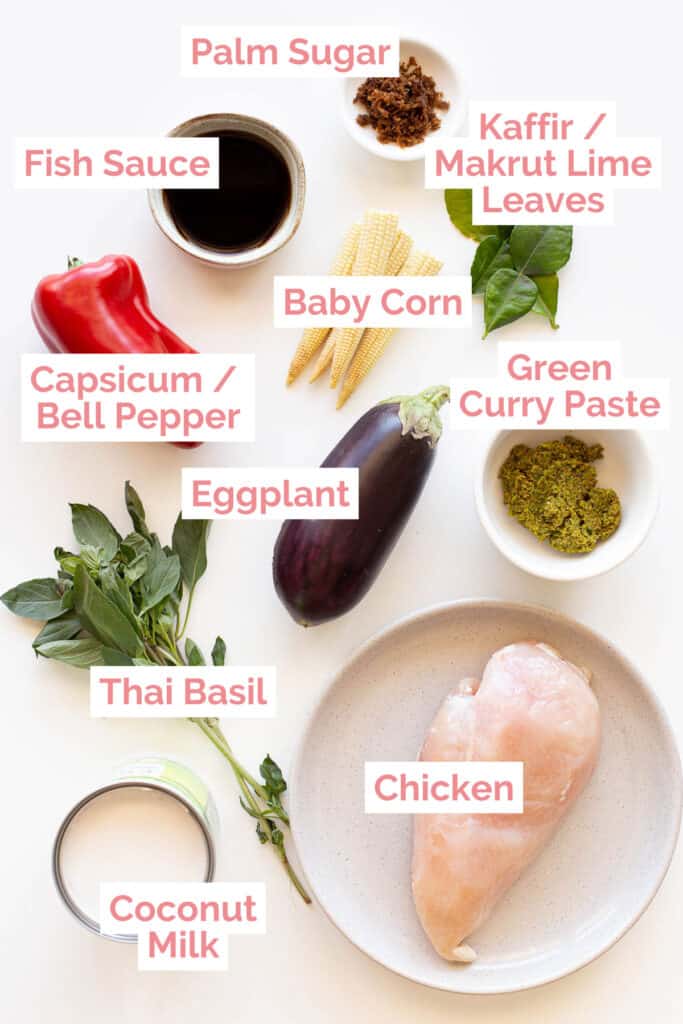
How to Make Thai Green Chicken Curry
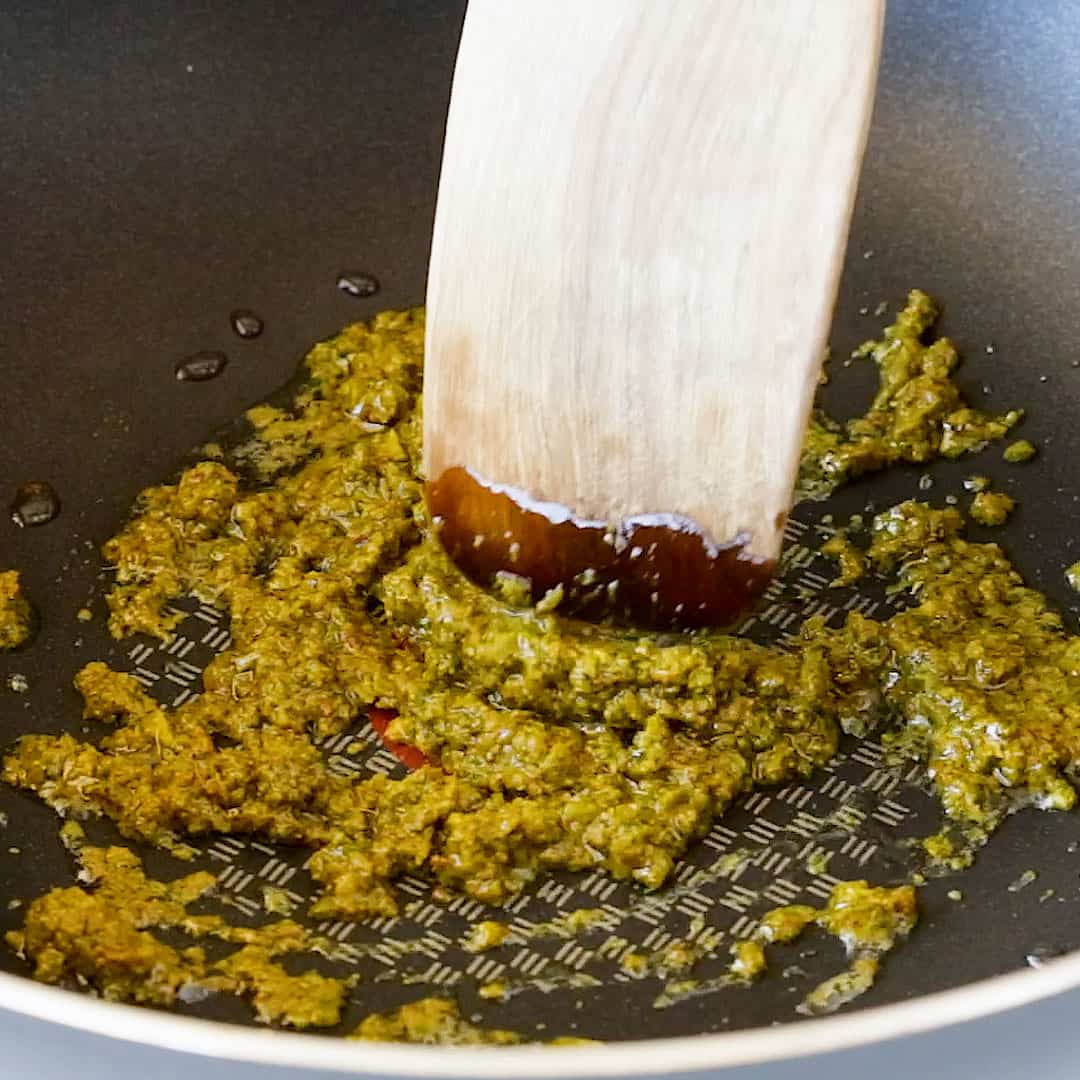
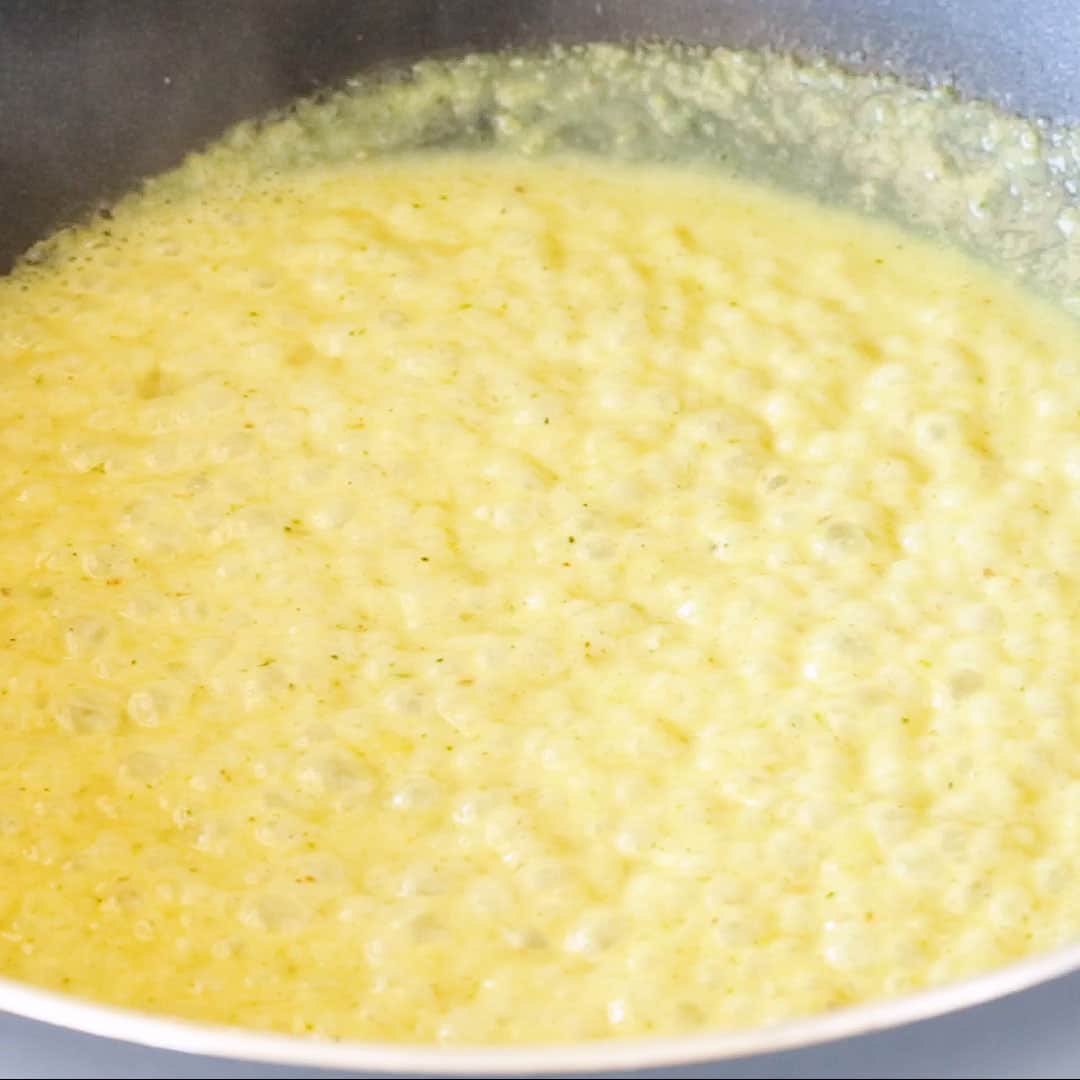
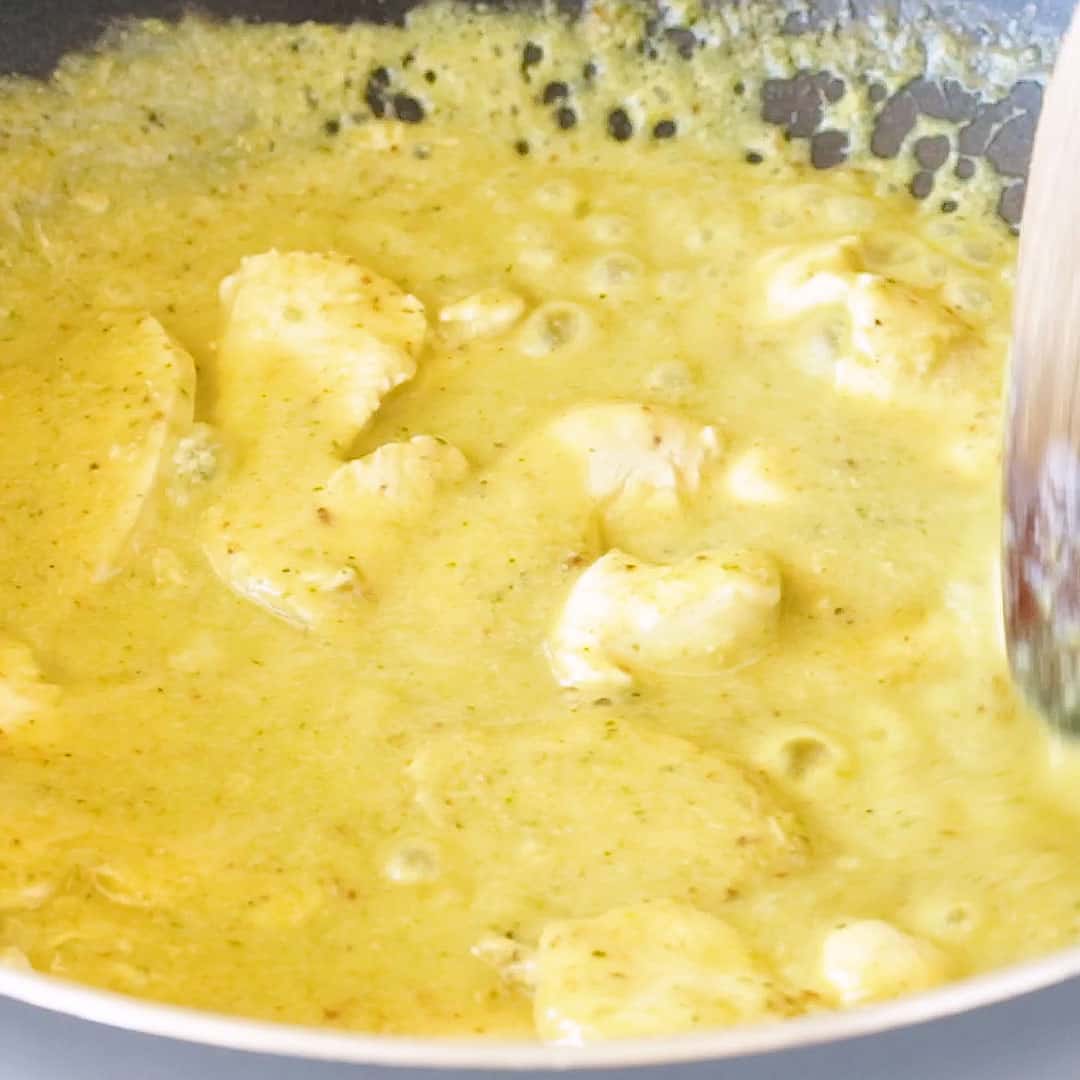
First, gather your ingredients: See recipe card below for measurements.
- Heat vegetable oil over low medium heat. Add green curry paste and keep stirring until fragrant, around 1 minute.
- Then add half the coconut milk. Turn up heat and stir well until it boils and bubbles, this will help split the milk for the classic green oil on top of your curry at the end.
- Add chicken, stir well until cooked, around 5 minutes.
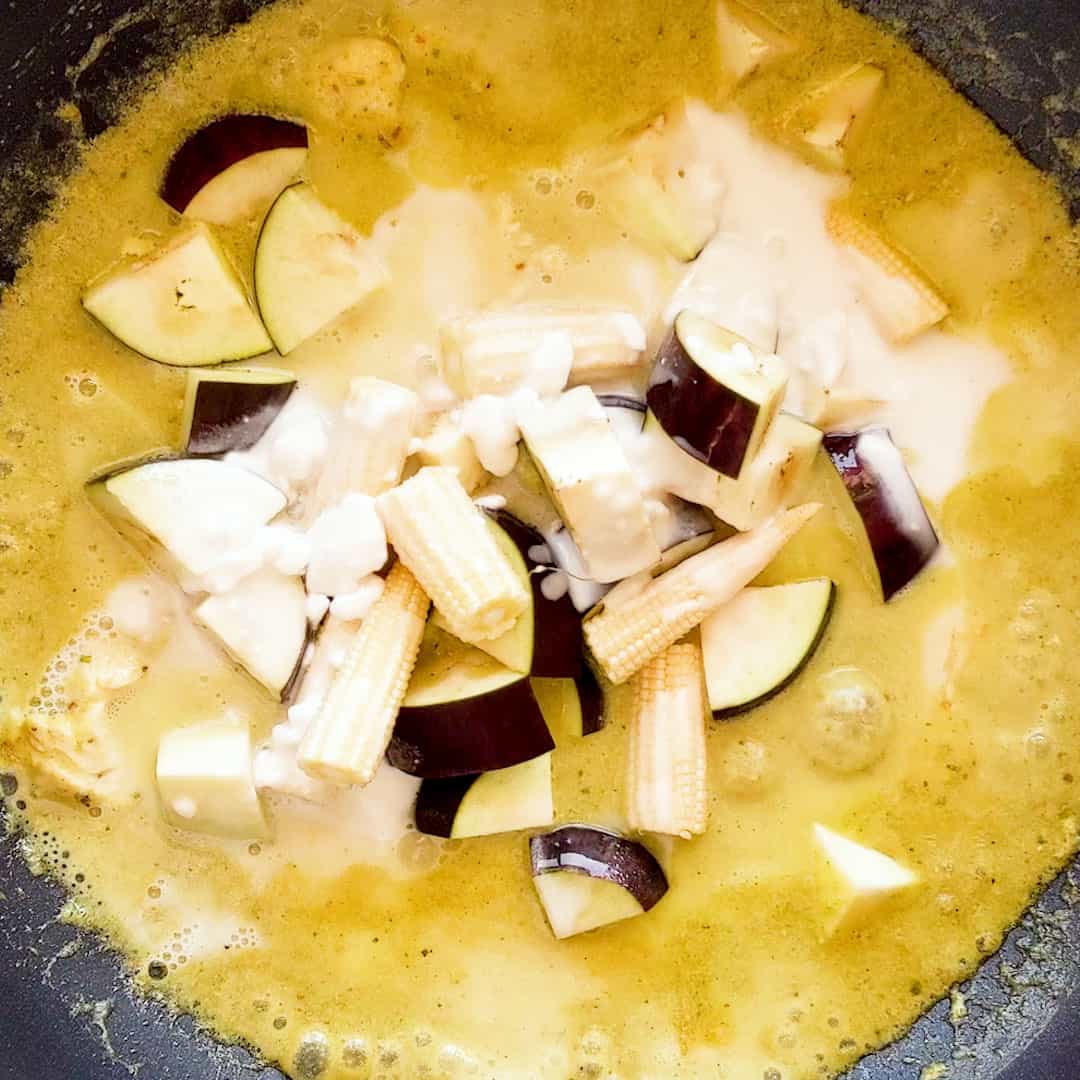
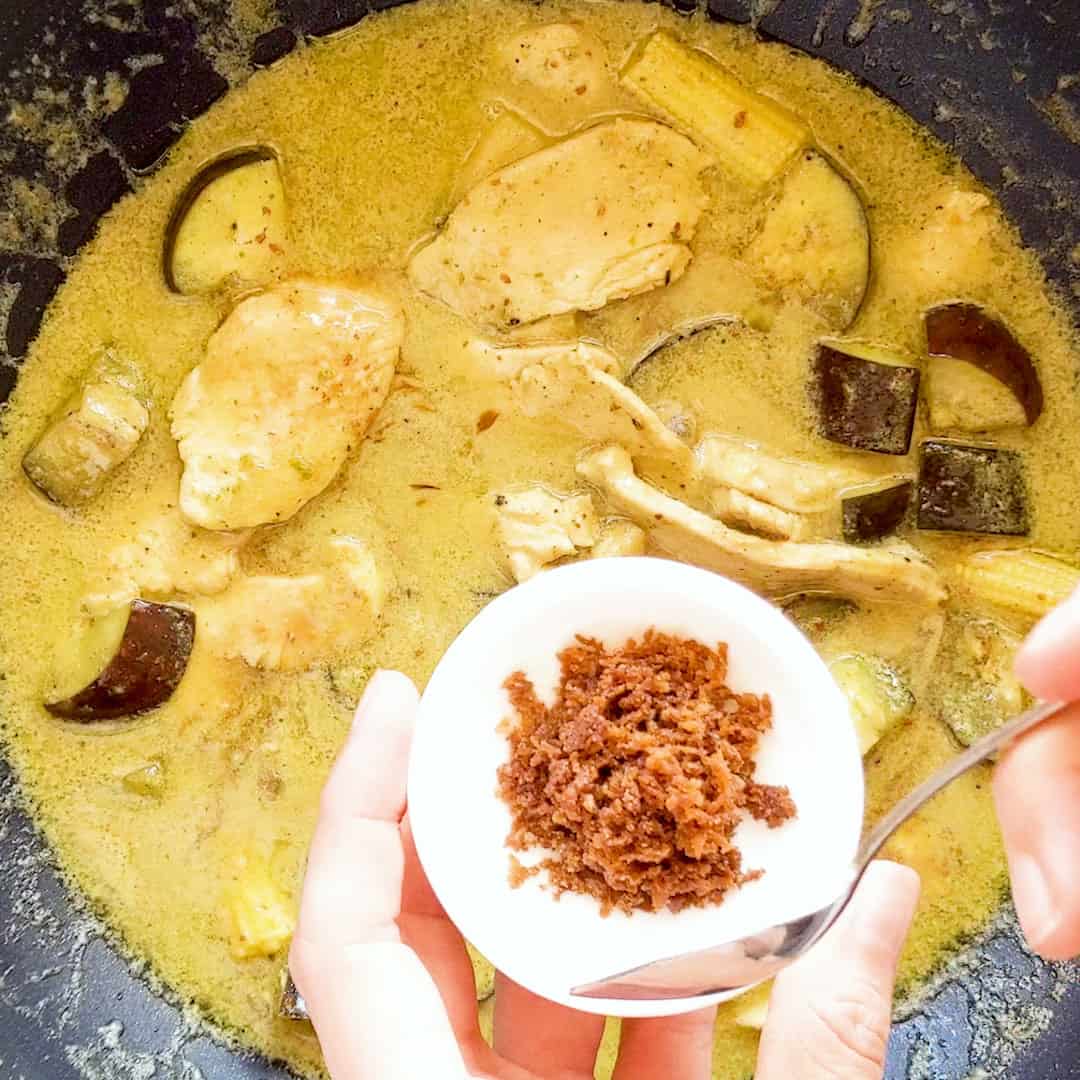
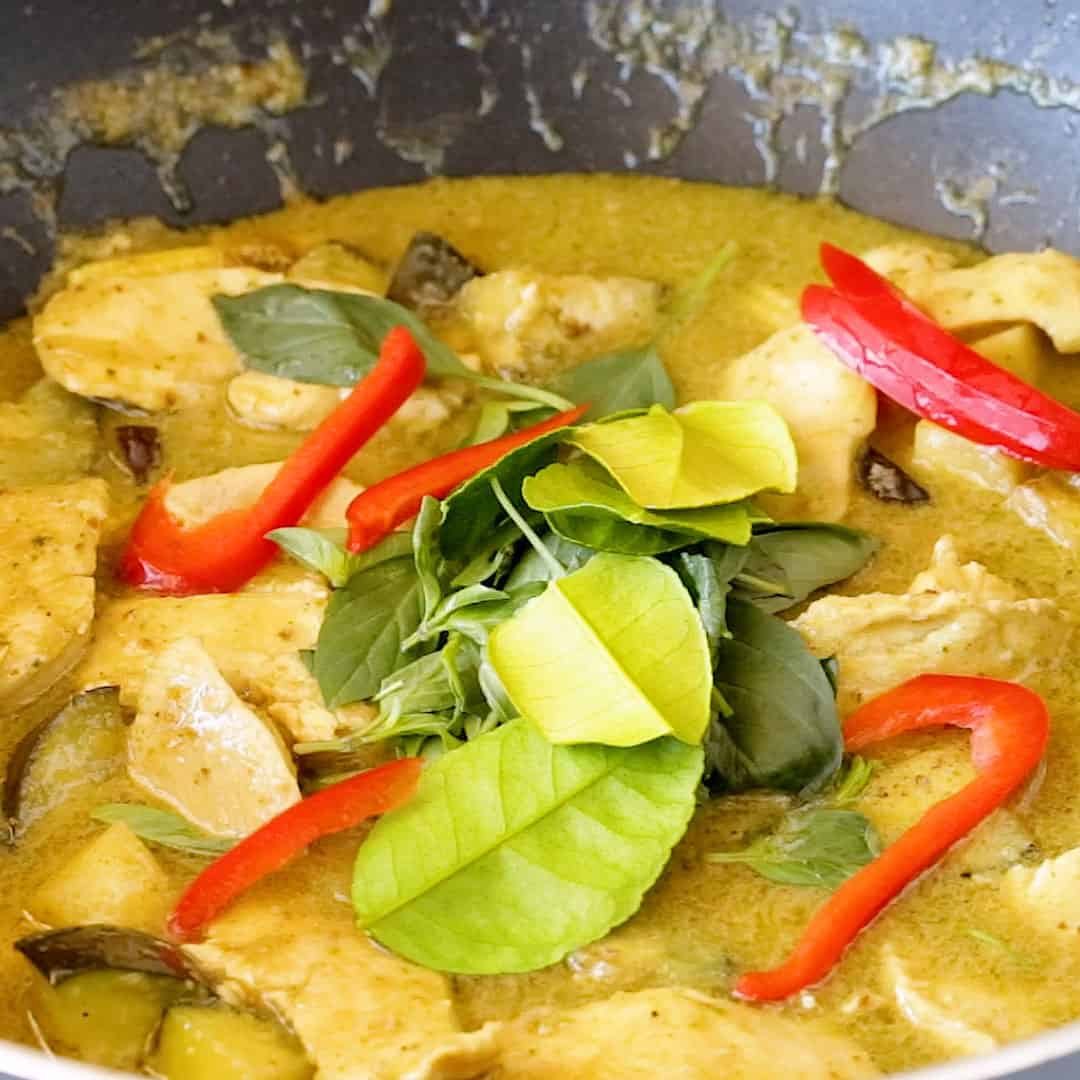
- Then add the remaining coconut milk, eggplant, optional pea eggplants and baby corn and stir occasionally. Swish coconut milk can with ¼ cup water to get the rest out and add in. Bring back to the boil until the vegetables have softened, around 5-10 minutes.
- Reduce heat to low and add fish sauce and palm sugar. Stir well until sugar dissolves.
- Add Thai basil leaves and Thai makrut / kaffir lime leaves. Stir gently for a further couple of minutes while it simmers, then remove from heat. Garnish with red chilli (or capsicum / bell pepper).
Wandercook’s Tips
- Storage – Leftover curry will last for 2-3 days in the fridge or around 2-3 months in the freezer in an airtight container. If possible, store curry separately from any rice so that the rice won’t soak up all the curry sauce.
FAQs
Yes, if you can’t source fish sauce or prefer not to use it, 1/2 tsp of salt will work for the substitution.
If you’re making this for a quick and easy weeknight dinner, serve it with freshly cooked jasmine rice. To make it into a homemade feast, why not make up a batch of crispy thai spring rolls or pandan chicken for entree? Serve with a glass of sweet Thai pink milk to cool off that curry heat.
Variations
- Garnish – Top with crispy fried shallots for extra texture! Otherwise, more herbs like extra sweet basil or coriander / cilantro work well.
- Protein – Swap out the chicken for seafood (prawns / shrimp, calamari or mussels), or make it with tofu instead.
- Extra Nutrition – Add in chickpeas, lentils, peas or beans as a great way to add extra nutrients and protein.
- Add Noodles – Such as sweet potato noodles / glass noodles, ramen noodles, or udon noodles. Be careful, the larger noodles tend to soak up a lot of liquid. Cook them separately first then add them into the curry. If possible, store leftovers separately as well so they don’t soak up further sauce over time.
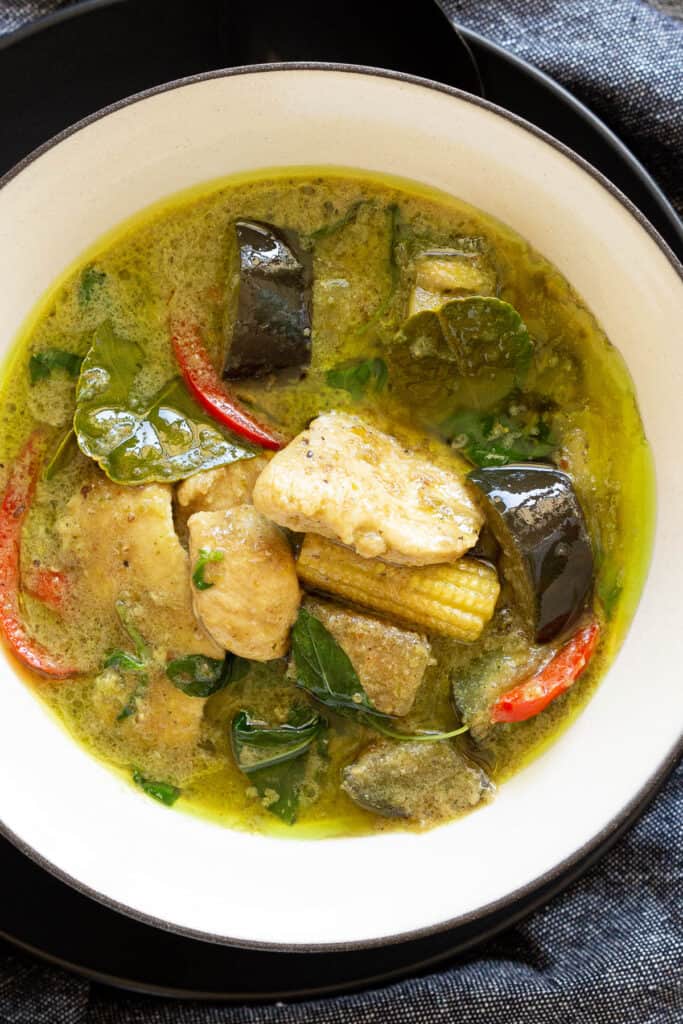
Try these amazing recipes next:
★ Did you make this recipe? Please leave a comment and a star rating below!
Ingredients
- 2 tbsp green curry paste 40 g / 1.41 oz
- 300 g chicken 10.58 oz, sliced, breasts or thigh
- 1 eggplant sub 3 small Thai green eggplants
- ½ cup Thai basil leaves loosely packed
- 4 baby corn fresh or canned
- 1 can coconut milk 400 ml / 14 fl oz, plus ¼ cup water to swish out remainder
- 6 Thai makrut / kaffir lime leaves whole
- 2 tbsp fish sauce
- 1 ½ tbsp palm sugar grated, sub brown sugar
- 2 tbsp vegetable oil
Optional
- 4 tbsp pea eggplants optional, only if you can source them, sub peas
- small red chilli to garnish, sub capsicum / bell pepper
Instructions
- Heat vegetable oil over low medium heat. Add green curry paste and keep stirring until fragrant, around 1 minute. Add half the coconut milk. Turn up heat and stir well until it boils and bubbles, this will help split the milk for the classic green oil on top of your curry at the end.2 tbsp green curry paste, 2 tbsp vegetable oil, 1 can coconut milk
- Add chicken, stir well until cooked, around 5 minutes, then add the remaining coconut milk, eggplant, optional pea eggplants and baby corn and stir occasionally. Swish coconut milk can with ¼ cup water to get the rest out and add in. Bring back to the boil until the vegetables have softened, around 5-10 minutes.300 g chicken, 1 eggplant, 4 baby corn, 1 can coconut milk, 4 tbsp pea eggplants
- Reduce heat to low and add fish sauce and palm sugar. Stir well until sugar dissolves then add Thai basil leaves and Thai makrut / kaffir lime leaves. Stir gently for a further couple of minutes, then remove from heat. Garnish with red chilli (or capsicum / bell pepper).½ cup Thai basil leaves, 6 Thai makrut / kaffir lime leaves, 2 tbsp fish sauce, 1 ½ tbsp palm sugar, small red chilli
Video
Nutrition
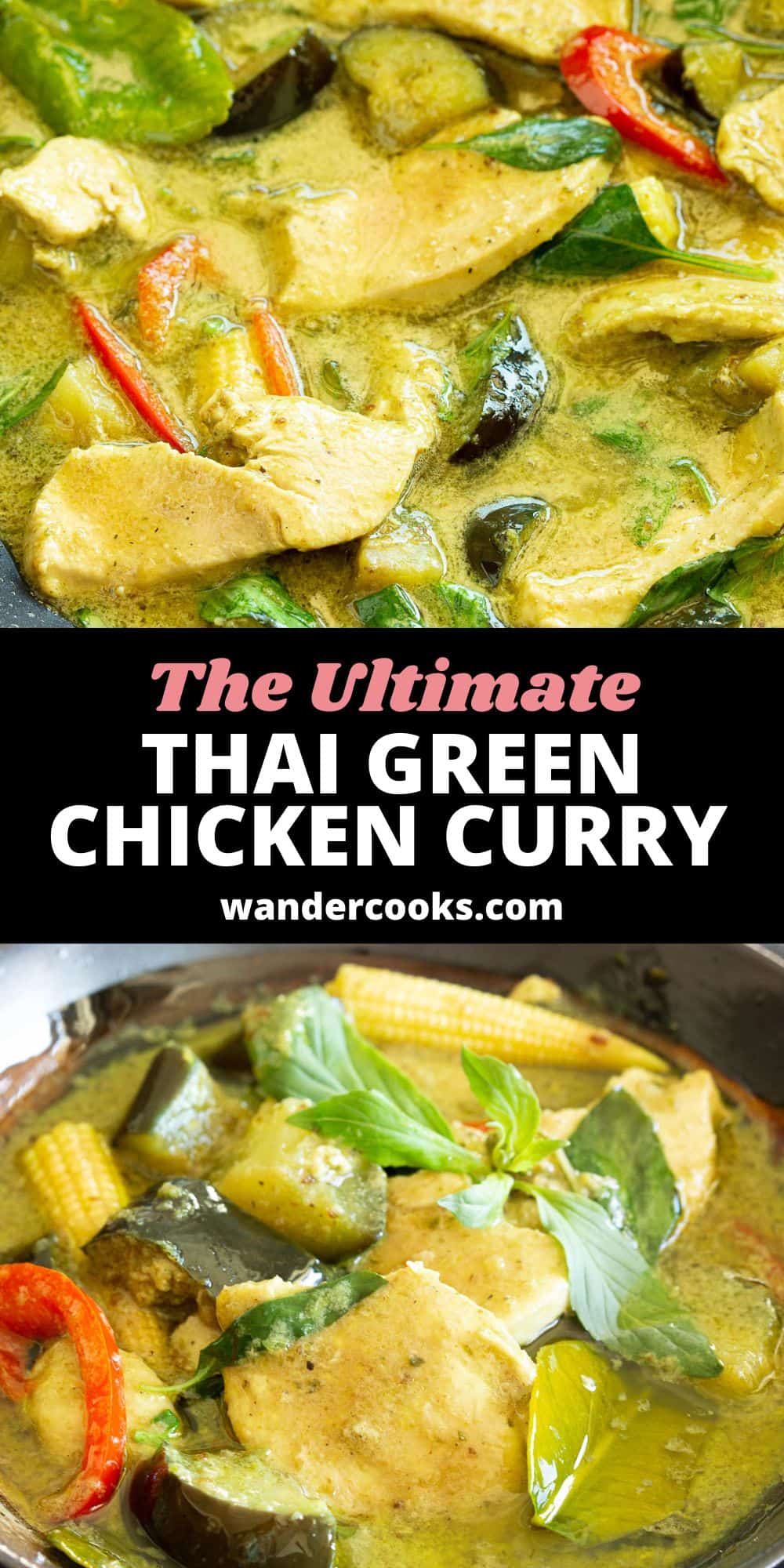

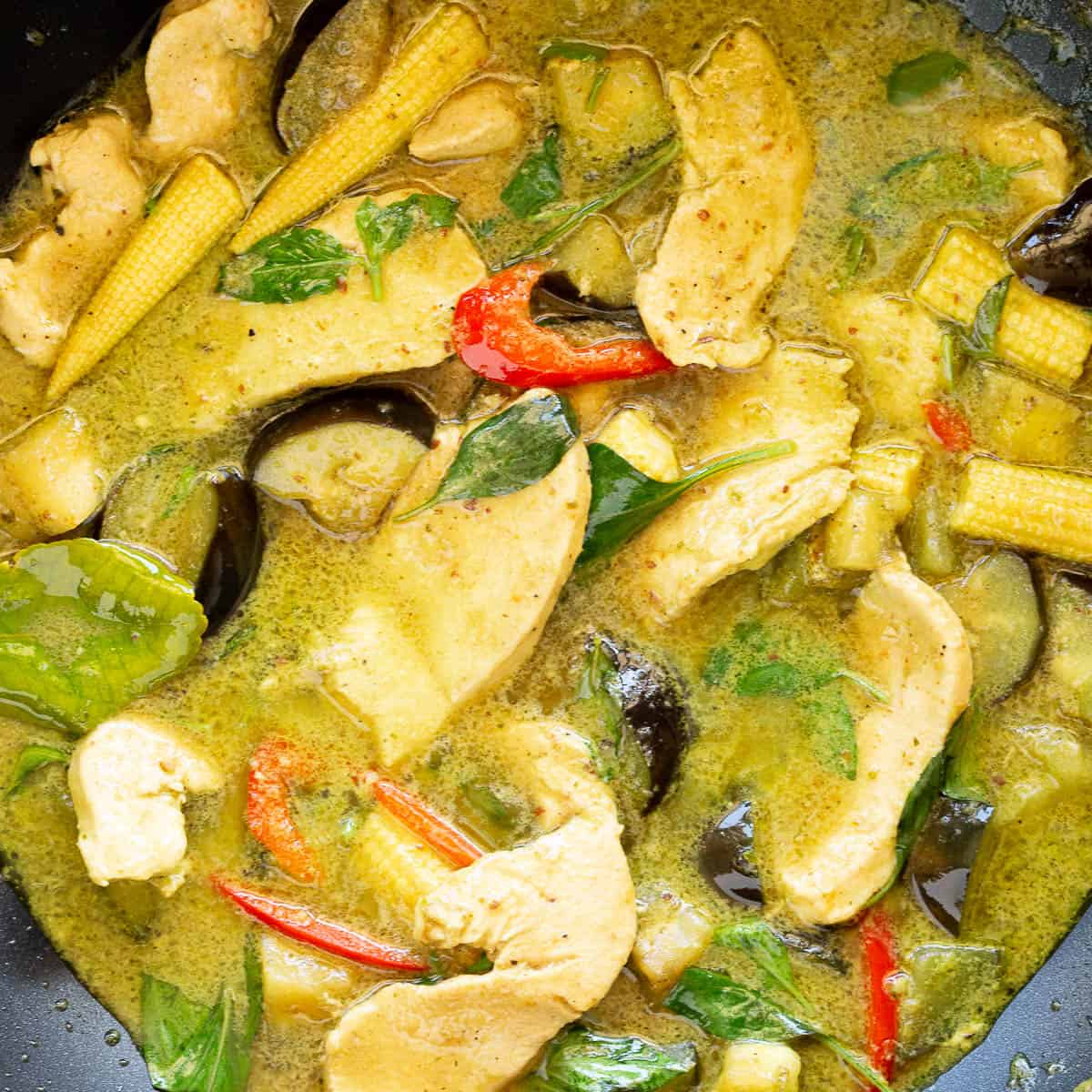



No Comments